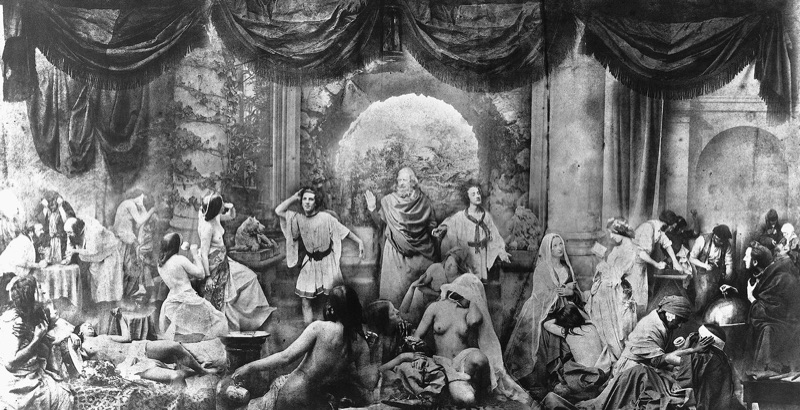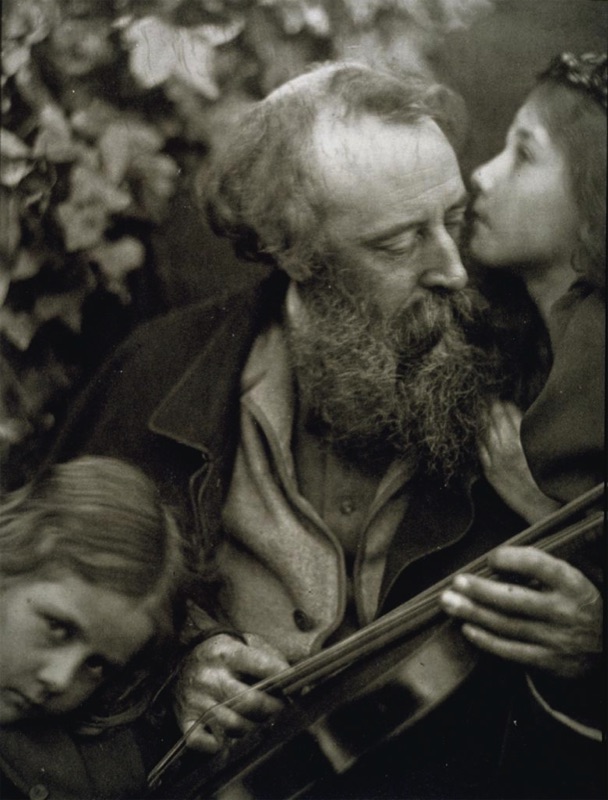Early photography
pre-class prep: read Chu pp. 253-55, 300-03, 343-45 (PDF)
read Barnett Newhall chs. 6 (PDF) & 7 (PDF)
discussion questions: There are no discussion questions for this topic.
people, terms, and concepts: Daguerre, Talbot, camera obscura, combination print, 'straight' photography, 'art' photography
key points:
• Be able to describe the basic technology of early photography, including the 'camera obscura' effect, the use of light-sensitive chemical solutions to record the images of the camera obscura, and other chemicals to 'fix' that image. Be aware of the limitations of early photography: limited to black and white, unbalanced sensitivity to different colors, very long exposure times, cumbersome equipment and complicated chemical processes, etc.
• Know the general difference between Daguerre's single-positive silver plate process, and Talbot's negative-positive paper process (later adapted to glass plates, and eventually film).
• Why was photography seen as particularly useful for scientific and documentary purposes in the 19th century? How is photography automatically more 'true to life' than a painting? How did early photographers such as Muybridge, Fenton, and travel photographers use the medium for scientific, technical, documentary, and journalistic purposes?
• Despite this apparent accuracy, how is photography still a subjective or biassed record of the world, dependent on subjective choices (and potential manipulation) by the photographer?
• Why wasn't photography accepted as an art form for most of the nineteenth century? How did photographers such as Oscar Rejlander and Julia Margaret Cameron try to create self-consciously 'artistic' photographs by imitating the conventions of painted images?
Oscar Rejlander, The Two Ways of Life, 1858
Julia Margaret Cameron, The Whisper of the Muse (G. F. Watts and children), 1865
(misnamed 'The Kiss of Peace' in the Beaumont Newhall reading above)


